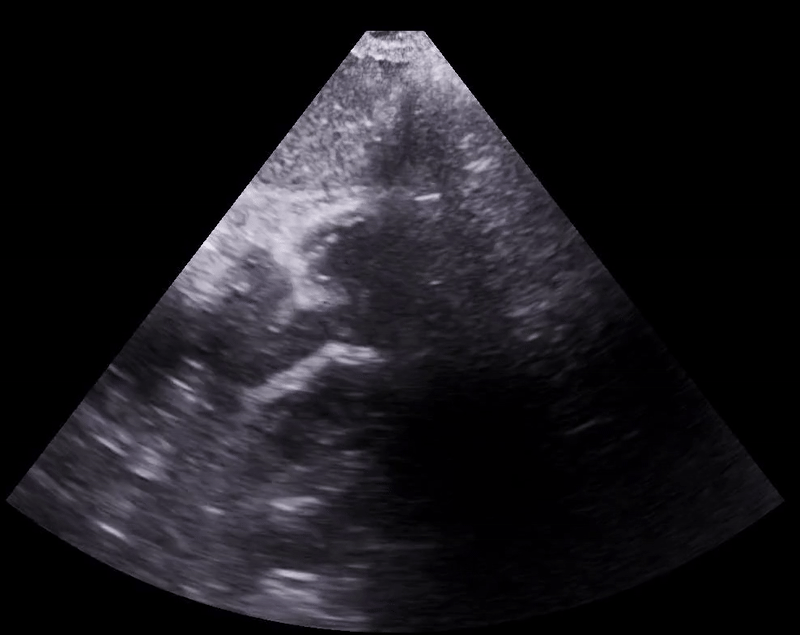Return of spontaneous circulation is achieved in an elderly patient who is brought into the emergency department after suffering a cardiac arrest. Hypotensive, POCUS cardiac shows a clot in transit and subsequently received thrombolysis for treatment of massive pulmonary embolism. The 30-day mortality of diagnosing a clot in transits is about 27%, but significantly reduced with thrombolysis or surgery.
Apical 4 chamber view with right atrial clot.
subxiphoid view with right atrial clot pushing through the tricuspid valve.

